Connecticut Pollinators
Connecticut is home to a diverse range of pollinators, including bees, butterflies, hummingbirds, and the lesser-known bunch… moths, flies, beetles, and wasps! Pollinators play an essential role in our world, as many plants rely on them to transfer pollen from one flower to another. Understanding the different types of pollinators commonly found in CT and how to attract them to your garden is a great way to support them directly!
bees
Honey Bees, Bumble Bees, Carpenter Bees, and Mining Bees
Bees prefer flowers that are purple, blue, or yellow, many of which reflect UV light in their center. This helps bees find the nectar within the flower! Blooms with a landing pad are the most attractive since bees land before collecting pollen. Try planting Monarda, Baptisia, Black-Eyed Susan, Purple Coneflower, Lobeila, Catmint, and Sunflower. It’s also a good idea to put a water source nearby, like a birdbath.
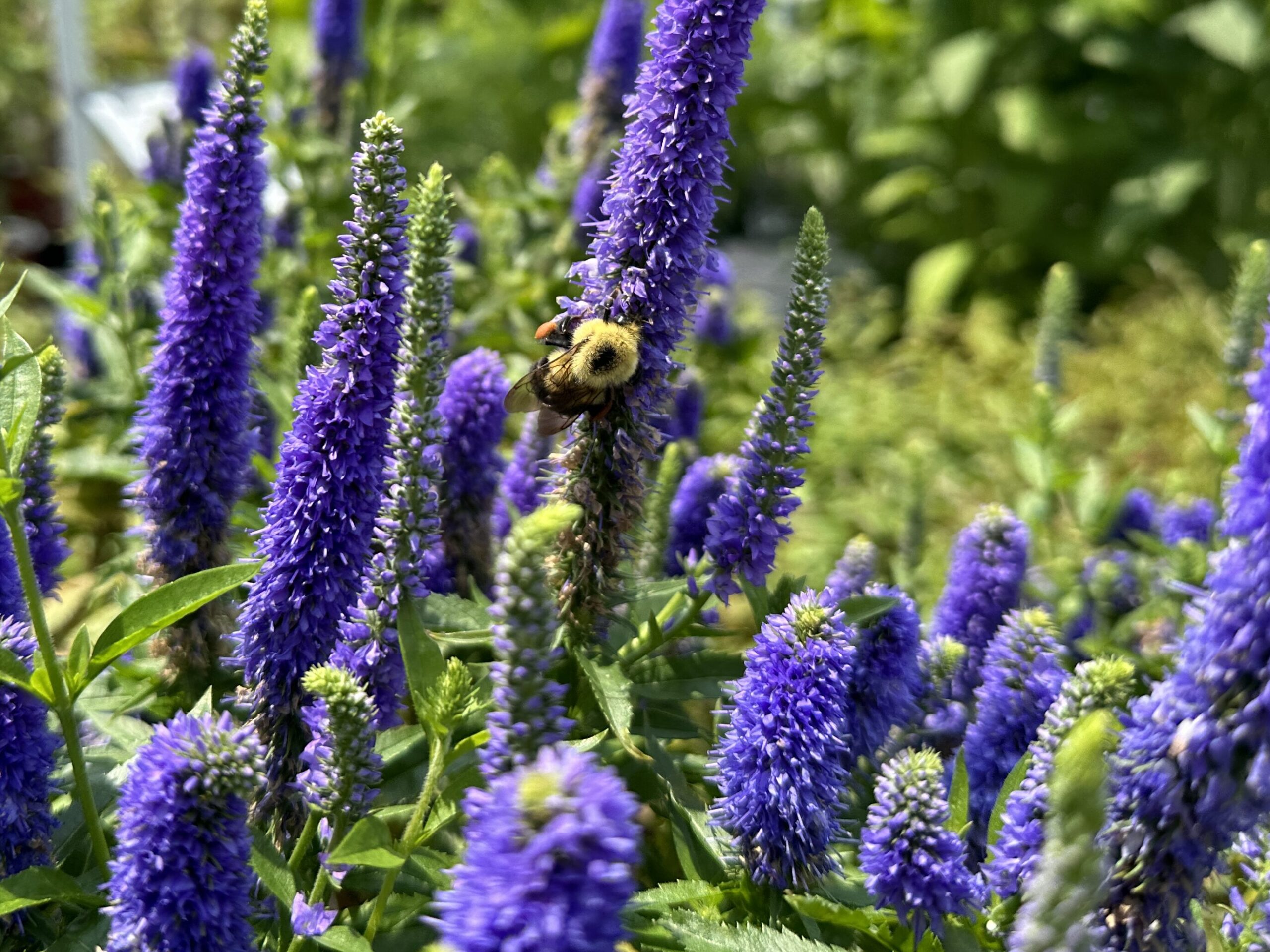
flies
Hoverflies, Common House Flies
Hoverflies often get mistaken for bees due to their coloring… but they are not! However, like bees, they are great pollinators and feed on nectar. Daisies, Queen Anne’s Lace, Alyssum, Cosmos, Lavender, Zinnias, and mint are great options for Hoverflies as they prefer small, flat flowers when the pollen is easy to access. Other flies, like common house flies, are attracted to dull colors and strong scents that tend to smell bad to people.
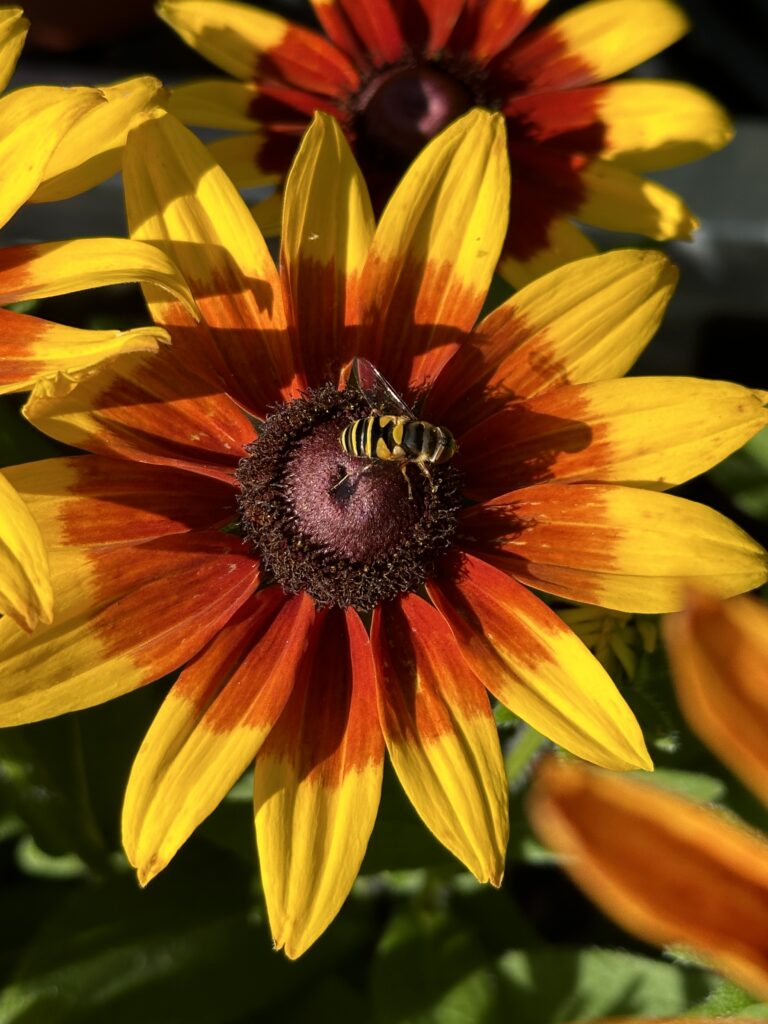
WASPS
Yellow Jackets, Paper Wasps, Mud Daubers
Though wasps are mainly carnivorous, they need to supplement their diet with nectar and do visit flowers! Their flowers of choice are usually white or yellow with unusual order and exposed nectar. Some flowers that wasps tend to feed from are Yarrow, Fennel, Goldenrod, and Rudbeckia.
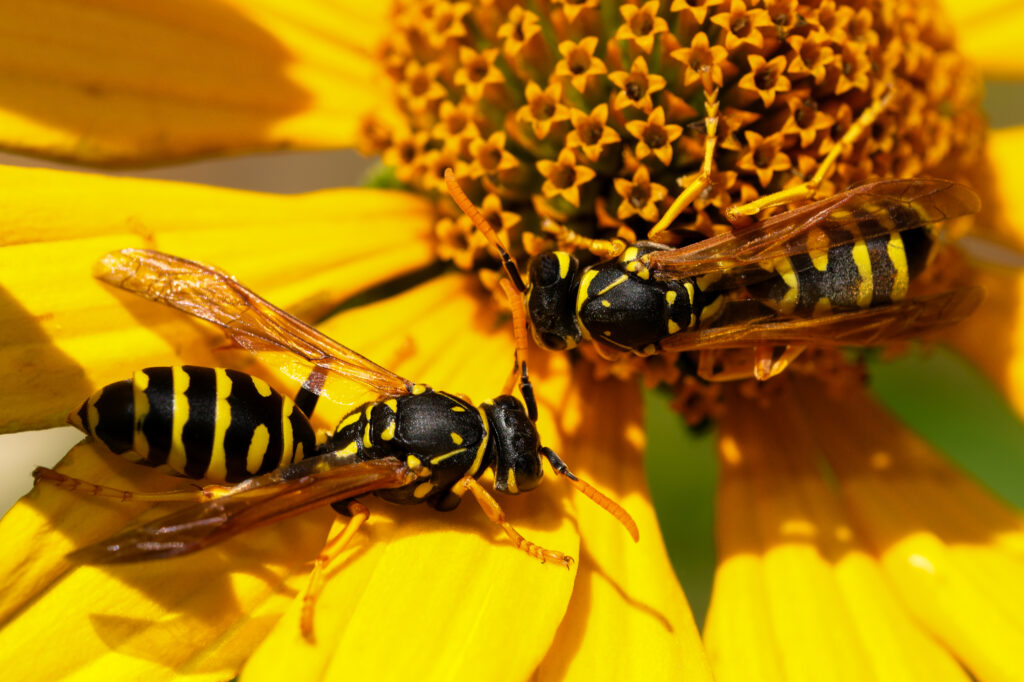
moths
Hummingbird Moth, Banded Woollybear Caterpillar Moth, Adjutant Wainscot Moth, Milkweed Tussock Moth
As the sun goes down, moths take over pollination duties! They are just as important, and often more efficient than bees and butterflies. Plant white or pale red, pink, and purple flowers with ample nectar, and include host plants like ferns, grasses, and shrubs. Light colors reflect moonlight, making it easier for moths to locate them in the dark. Some good options for moths include Petunia, Honeysuckle, Morning Glory, Tobacco, Yucca, and Gardenia.
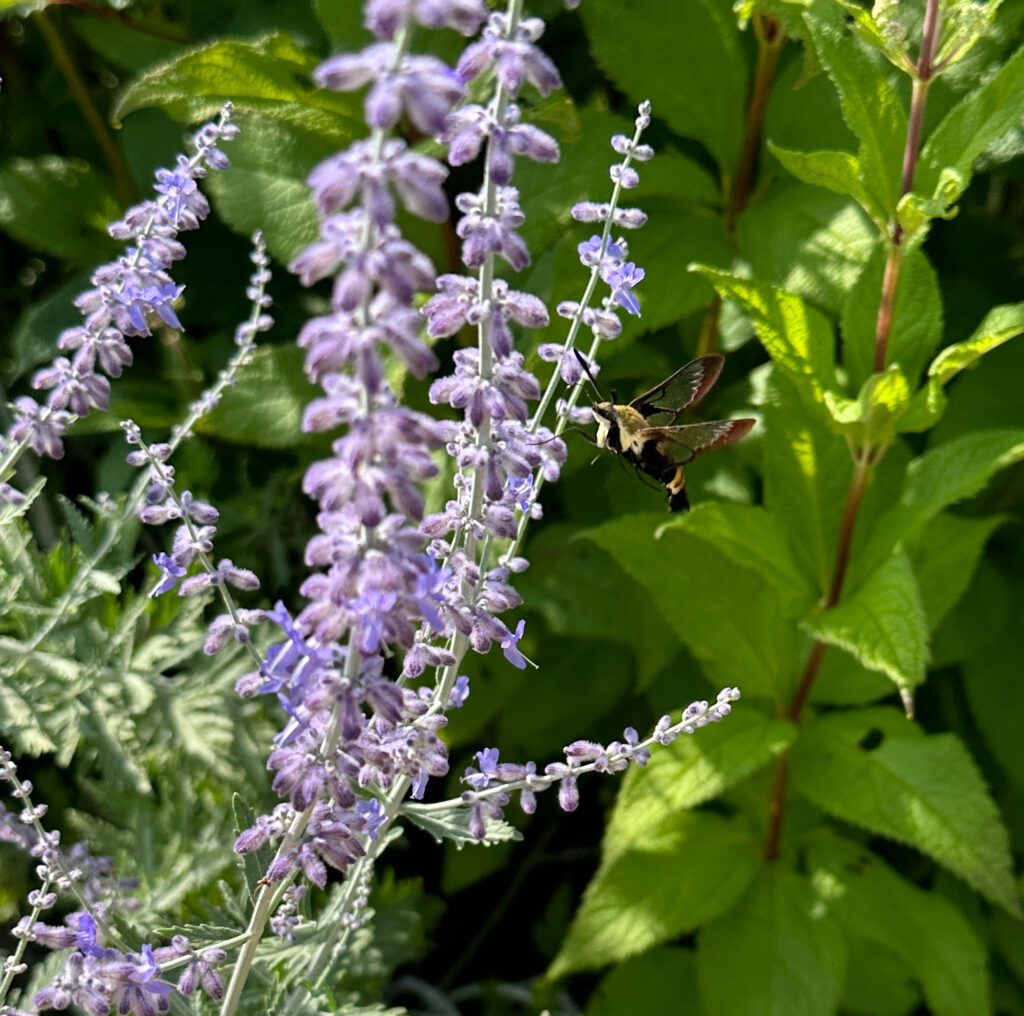
butterflies
Monarch, Cabbage White, Eastern Tiger Swallowtail, Silver-Spotted Skipper
Butterflies collect pollen on flat, open, or clustered flowers with landing pads and a pink, purple, orange, red, or white flower hues. Adding some stones or pebbles can attract butterflies, as they need sunny spots to rest and recharge. Some great plants to include are Lilac, Milkweed, Joe-Pye Weed, Goldenrods, Tickseed Sunflower, and Aster.
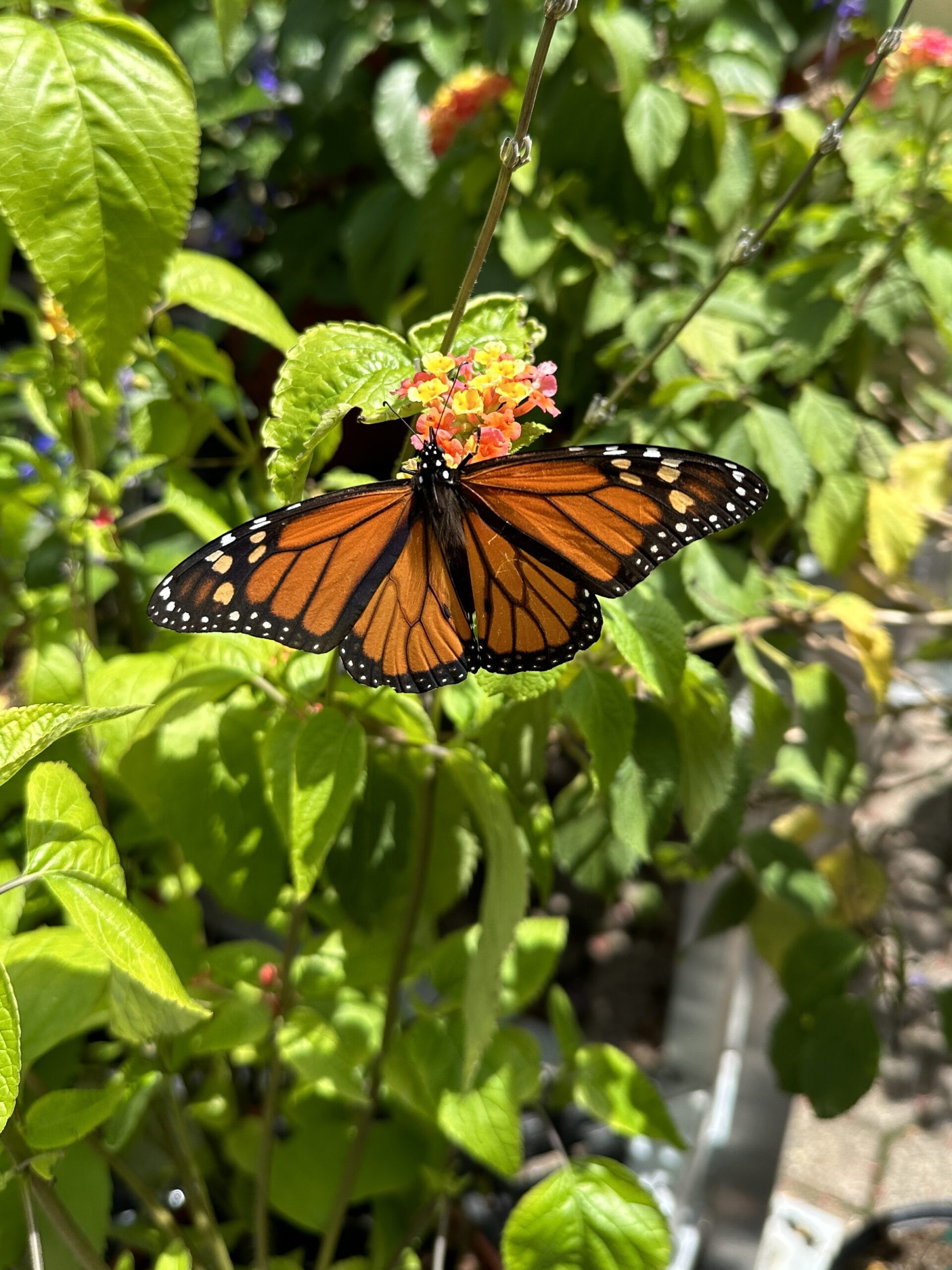
birds
Hummingbirds, American Robin, Northern Cardinal
Hummingbirds have long beaks and tongues that allow them to reach nectar from long, tubular flowers, which is their preferred shape. They can see the color red, unlike bees, and are drawn to bright shades of red, orange, purple, and pink. Other types of birds can help spread seeds by eating the berries of many plants. Flowers like Monarda, Foxglove, Cigar Plant, Salvia, and Agastache, are great for Hummingbirds while Inkberry, Vibernum, Crabapple, and Blackberry bushes will attract songbirds.
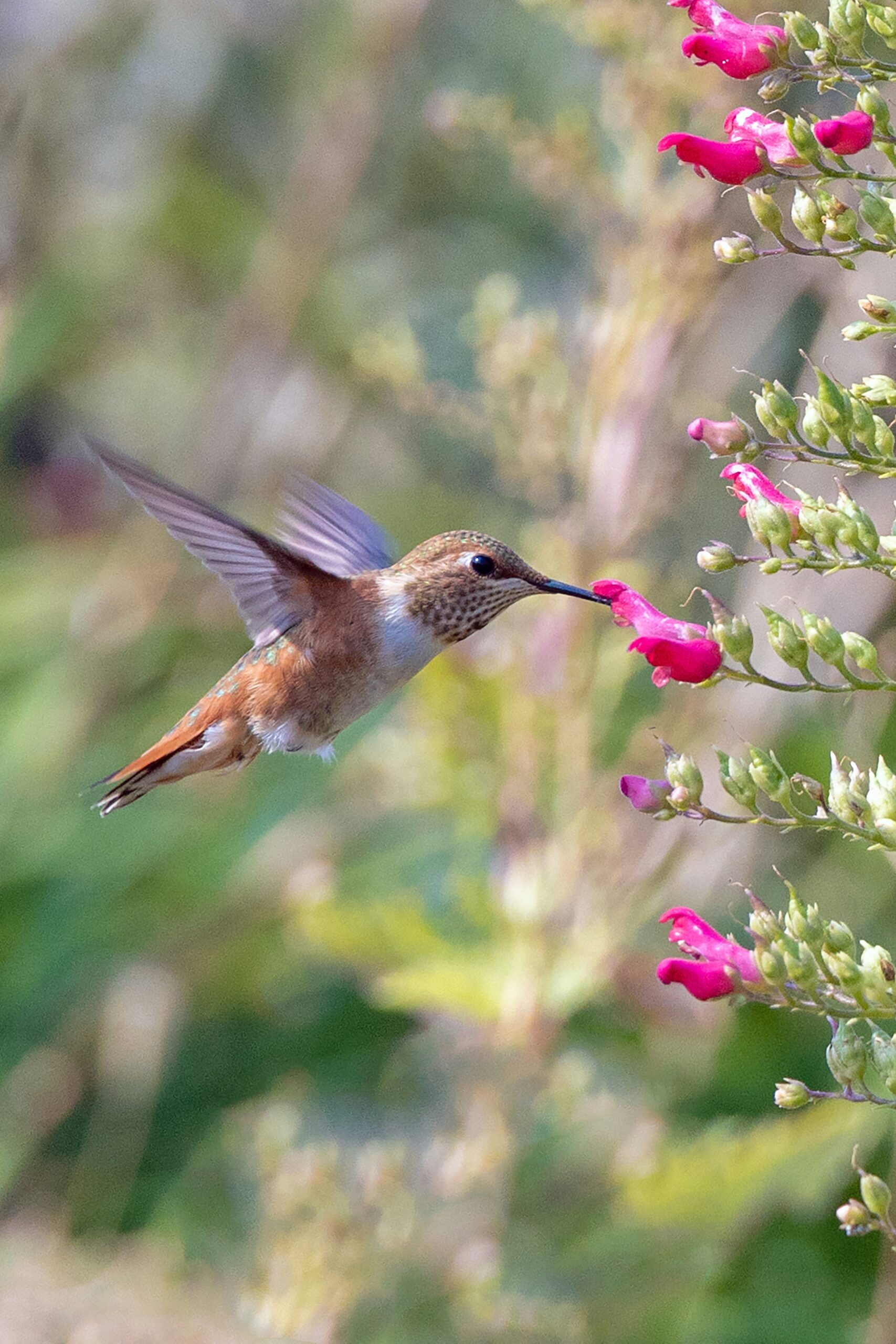
Sources & Info:
Butterfly Pollination. www.fs.usda.gov/wildflowers/pollinators/animals/butterflies.shtml.
Hansen, By Jolene. Draw Pollinators Like Bees, Birds and Butterflies to Your Garden. www.gardentech.com/blog/garden-and-lawn-protection/gardening-for-bees-birds-and-butterflies.
“Moths-The Forgotten Pollinators (Monroe County).” Master Gardener, extension.psu.edu/programs/master-gardener/counties/monroe/news/moths.
“Pollinator Information.” CT.gov – Connecticut’s Official State Website, portal.ct.gov/caes/publications/publications/pollinator-information.
Regional Butterfly and Moth Information | Butterflies and Moths of North America. www.butterfliesandmoths.org/identify/region/Connecticut.
Wasps, Surprisingly Cool Pollinators – Maryland Agronomy News. 31 Aug. 2020, blog.umd.edu/agronomynews/2020/08/31/wasps-surprisingly-cool-pollinators.